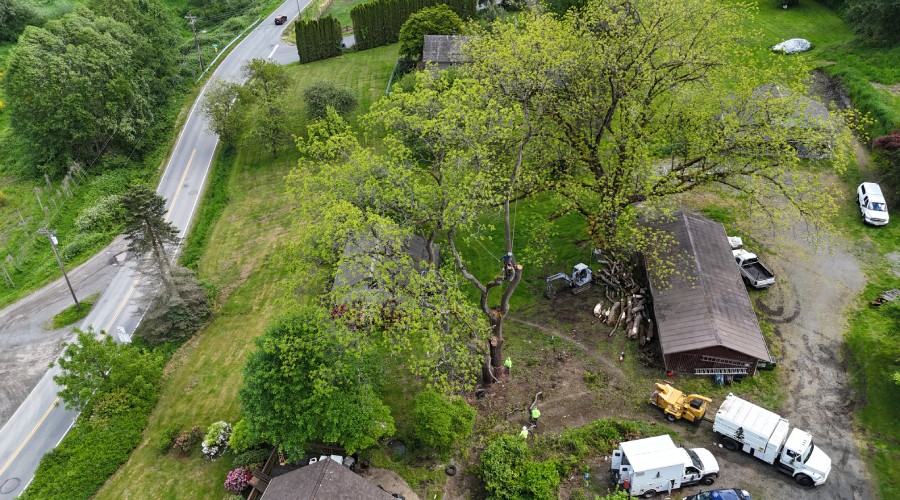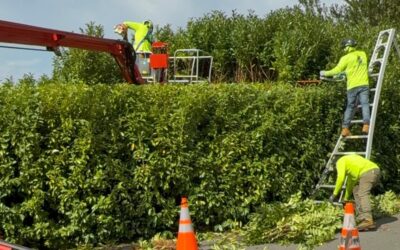Trees are one of the most valuable features of any property. They provide shade, improve air quality, create natural privacy, and enhance overall curb appeal. But despite how strong they look, trees require consistent care to remain healthy and stable. Understanding how proper maintenance works is essential for every homeowner, especially in areas with changing seasons, strong winds, and heavy rainfall.
This article explores how tree care impacts safety, property value, and long-term landscape health — and why regular attention matters more than most people realize.
The Relationship Between Tree Health and Property Safety
Healthy trees are an asset. Unhealthy trees are a risk.
Many homeowners don’t realize that a tree’s outward appearance doesn’t always reflect its structural condition. A tree may look stable while suffering from internal decay, root damage, or pest infestation. When a storm hits, weakened trees can drop large branches or fall entirely, causing expensive property damage.
Some early warning signs include:
- Dead or brittle branches
- Sawdust piles at the base (a sign of borers)
- Cracks or splits in the trunk
- Leaning that develops suddenly
- Soil heaving near the roots
- Sparse leaves or early leaf drop
- Fungus or mushrooms around the base
By identifying these signs early, homeowners can prevent major hazards long before a storm occurs.
Why Regular Tree Maintenance Matters
Proper tree maintenance is a combination of trimming, structural pruning, health inspections, and environmental care. Consistent upkeep provides several long-term benefits:
1. Encourages healthy growth
Pruning removes dead wood and diseased limbs, allowing the tree to direct energy into strong, healthy branches.
2. Reduces the risk of storm damage
Well-maintained trees withstand strong winds more effectively than trees with overgrown, unbalanced canopies.
3. Improves the appearance of your landscape
Trimmed and shaped trees enhance your yard’s visual appeal and make the entire property look cared for.
4. Prevents pest infestations
Damaged or dying limbs attract insects that can spread to other trees across your yard.
5. Protects nearby structures
Branches growing too close to roofs, siding, fences, or driveways can cause costly damage over time.
Tree care is not just about improving beauty — it’s about protecting the property and preserving long-term stability.
The Importance of Seasonal Tree Care
Trees respond differently throughout the year, and seasonal care ensures they remain healthy from winter to summer.
Spring
Inspect for winter damage, begin a watering schedule, and treat early signs of pests or disease.
Summer
Monitor hydration levels, prune hazardous limbs, and check for heat stress or leaf scorch.
Fall
Remove weak branches before storms, clear debris around the base, and prepare trees for dormancy.
Winter
Conduct major structural pruning, plan new plantings for spring, and inspect trees after heavy snow or wind.
Listening to the needs of your landscape through each season prevents emergencies and encourages sustainable growth.
Tree Removal and When It Becomes Necessary
Although the goal is always to preserve healthy trees, sometimes removal is the safest choice. Common reasons include:
- Severe storm damage
- Advanced disease or decay
- Root systems affecting foundations or driveways
- Trees growing too close to structures
- Hazardous leaning or unstable trunks
- Invasive species overtaking native plants
Removing a tree is not a failure of care — it’s often a responsible decision to protect surrounding vegetation and structures.
Stump Grinding: Why It Matters More Than Most Homeowners Think
Many people assume a stump is harmless, but leaving it behind often leads to:
- Trip hazards
- Pest infestations
- Fungal growth
- New unwanted sprouts
- Roots spreading underground
Grinding removes the stump and restores a clean, stable surface suitable for replanting, landscaping, or simply improving visual appearance.
How Trees Affect Home Value and Landscape Quality
A well-maintained landscape can increase property value significantly. Healthy, mature trees make homes more appealing to buyers and improve overall livability.
Healthy trees can contribute to:
- Lower cooling costs in summer
- Greater privacy and shade
- More attractive yard design
- Higher long-term property satisfaction
Whether you plan to stay in your home or list it in the future, proper tree care is a smart investment.
DIY Tree Care Tips Every Homeowner Should Know
Homeowners can handle basic tree care tasks safely as long as they avoid dangerous or complex work. Some simple and effective tips include:
- Water trees slowly and deeply rather than with frequent, shallow watering
- Avoid piling mulch against the trunk (keep a small gap)
- Trim small, low branches with clean, sharp tools
- Keep lawn equipment away from the bark to prevent damage
- Plant new trees at the correct depth, with the root flare visible
- Choose native species suited to the local climate and soil
However, anything involving heights, large limbs, or power tools should be left to trained professionals.
Why Professional Tree Care Makes a Difference
Tree care may look simple, but it often requires advanced knowledge of biology, root systems, weight distribution, and safe cutting techniques. Professionals use proper equipment and follow safety standards designed to prevent accidents.
Professional assessments also catch problems that the average homeowner may not notice — such as internal decay, root distress, or early disease. When safety and long-term landscape health are priorities, expert guidance provides clarity and protection.
Final Thoughts
Caring for your trees is one of the most effective ways to protect your home and maintain a beautiful landscape. With regular maintenance, seasonal inspections, and proper pruning, your trees can remain strong, stable, and healthy for decades.
Whether you choose to manage small tasks on your own or bring in professional support for larger projects, consistent care ensures that your trees continue to enrich your property year after year.
Need Help Maintaining Your Trees?
If you are located in Snohomish County or nearby areas and need assistance with trimming, pruning, inspections, or stump grinding, you can contact:
Western Hemlock Tree Services
18305 59th AVE SE, Snohomish, WA 98296
Phone: +1 425-374-8996
Website: https://www.westernhemlockts.com
Email: claudia@westernhemlockts.com
Whether you handle basic maintenance yourself or work with a trusted tree care professional, consistent attention will help your trees stay strong, safe, and beautiful for years to come.



